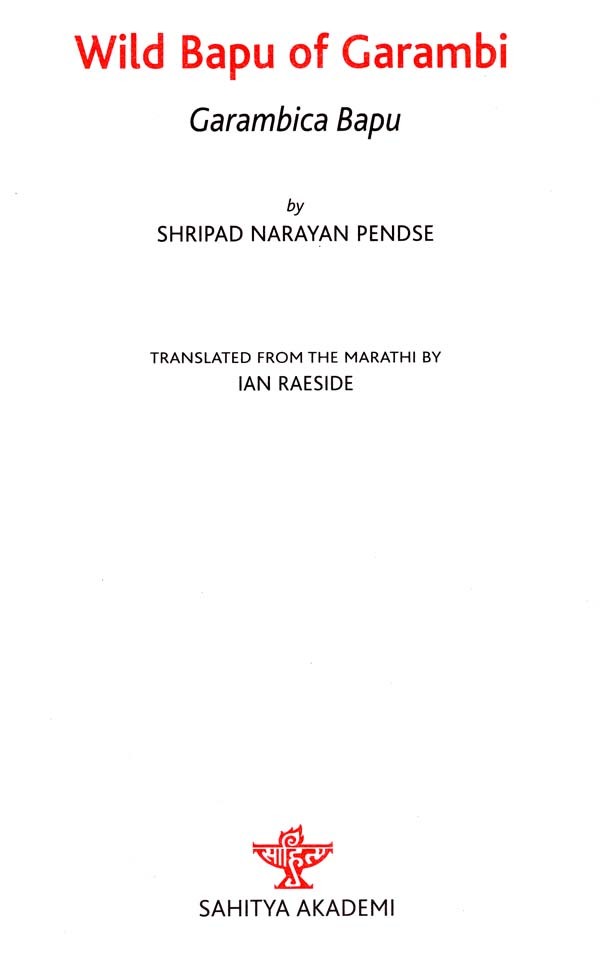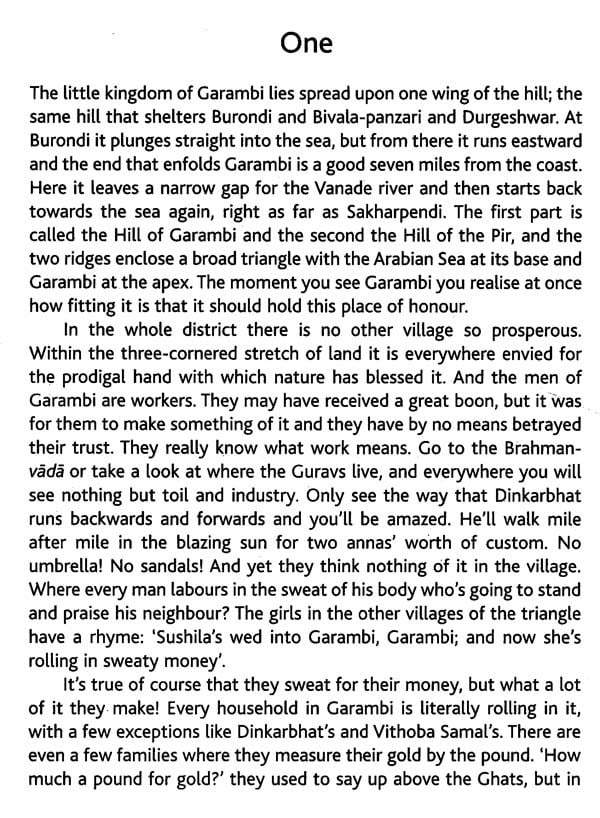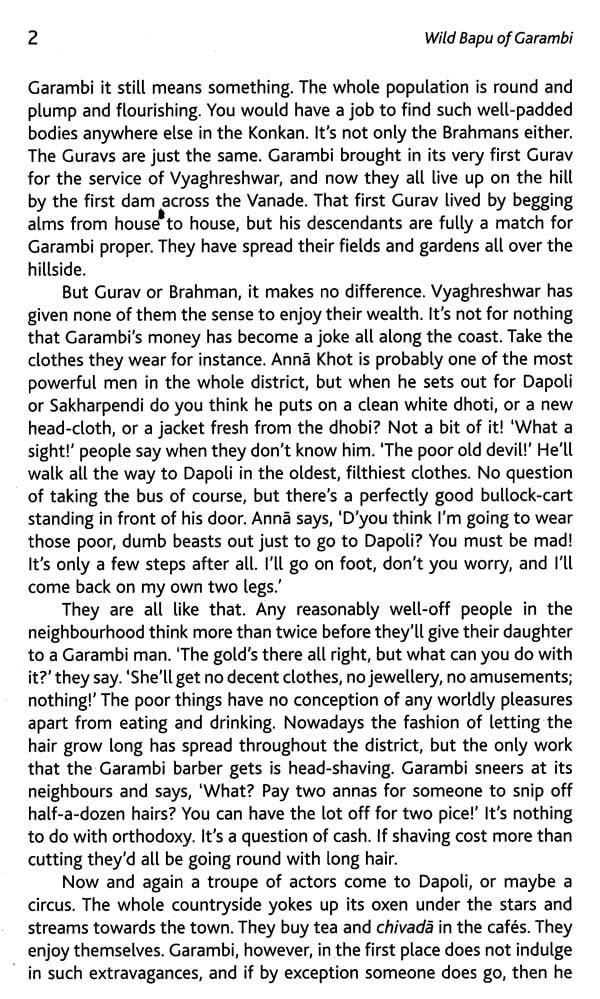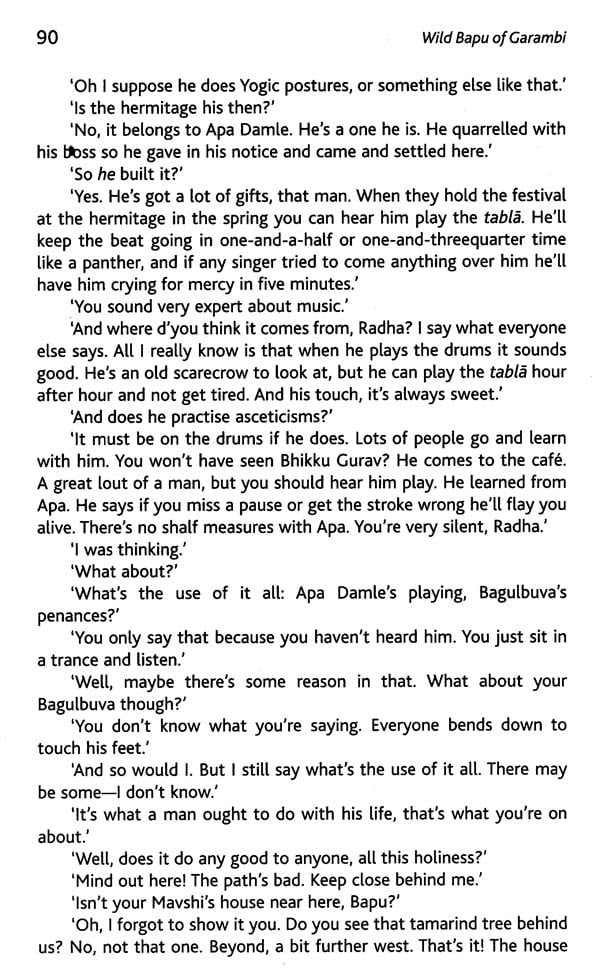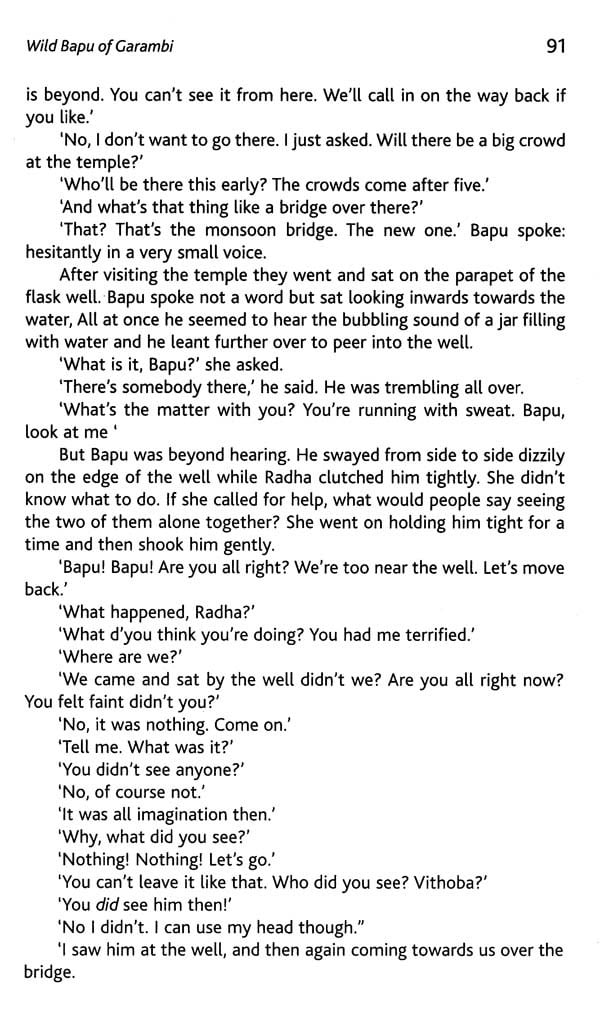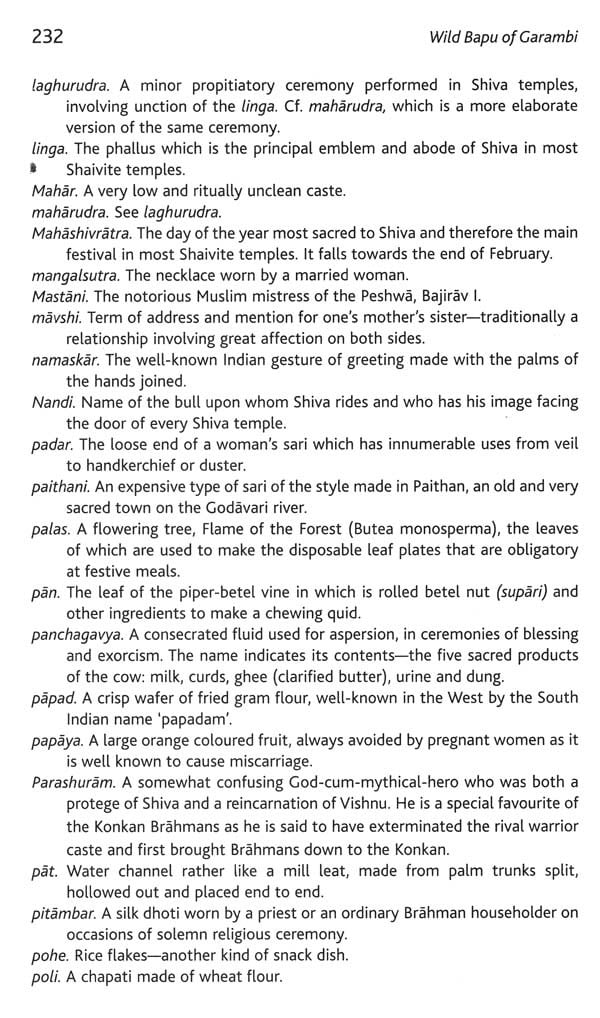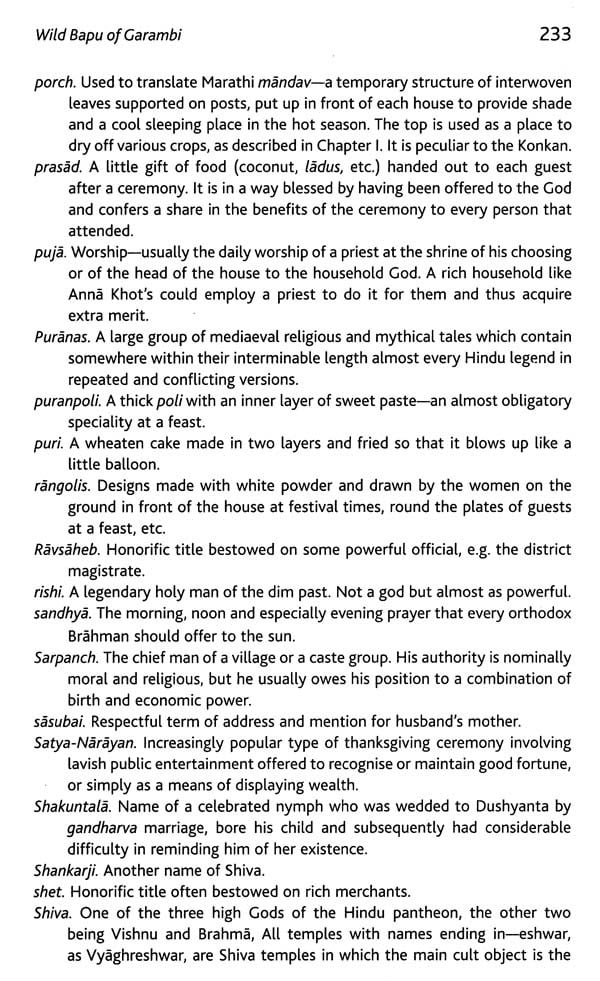
Wild Bapu of Garambi (Garambica Bapu)
Book Specification
| Item Code: | AZI010 |
| Author: | Shripad Narayan Pendse |
| Publisher: | SAHITYA AKADEMI, DELHI |
| Language: | English |
| Edition: | 2017 |
| ISBN: | 9788126053209 |
| Pages: | 242 |
| Cover: | Paperback |
| Other Details | 8.50x5.50 inches |
| Weight | 325 gm |
Book Description
Pendse writes: 'My readers are now well acquainted with this region described in my novels. I did not choose it consciously. It is a part of my being. Eleven years of my childhood are shaped by this land and water. I have passionately loved it as if it were a living being' Wild Bape of Garambe is a novel revealing how one sector of rural India has been responding to ever increasing urbanization;-traditions bend but do not break.
Shripad Narayan Pendse (1913-2007) was one of the finest writers in Marathi. He was born in Konkan, the picturesque coastal area in Western India which is the locale of most of his regional novels. He started writing in Marathi in 1940, after graduating in Science from Bombay University.
Garambacha Bapu (1952) has been translated into Gujarati, Hindi and Telugu, and this translation into English in 1969 with the title Wild Bapu of Garambe as a part of the UNESCO Collection of Representative Works, which had been organized with Sahitya Akademi collaboration. His seventh novel Rathachakra (The Chariot-Wheel) was awarded the Sahitya Akademi Award for 1963. Elgar (1949), Haddapar (The Outcast, 1950), Hatya (1954), Tumbadche Khot (The Khots of Tumbad, 1987) and Haak Abbalachi (2007)are Pendse's other popular novels. Mahapur (1961), Rajemastar (1964), Chakravyuba (1970) and Dr. Huddar (1990) are some of his popular dramas.
Ian Raeside (1927-2011), was the last person to teach the Marathi language as an academic subject in Great Britain and made an important contribution to knowledge of Marathi texts worldwide. He joined the School of Oriental and African Studies (Soas) in London in 1954 as an assistant lecturer in linguistics, afterwards becoming lecturer and senior lecturer in Gujarati and Marathi. He was acting head of department for four years before his retirement in 1991 and also served as senior tutor and dean of undergraduate studies. The bulk of his published work focused on the close analysis and translation of texts in Marathi. His own aptitude for the languages he taught led to his winning a prize for his translation of a short story from Marathi after having studied the language for only three years (it was published in the 1966 collection The Rough and the Smooth). His Bibliography of Mahanubhav Works in Marathi was republished in 2003 and his final major work was a translation of Gadyaraja: A Fourteenth Century Marathi Version of the Krsna Legend (1989).
Shripad Narayan Pendse is generally allowed to be the foremost novelist in the generation of Marathi writers who reached their artistic maturity in the years following India's independence. He was born in 1913 in a village in the Konkan, the coastal strip of Maharashtra that forms the background of all his novels. He came to Bombay for his education, at school and university, and he still lives and works in that city.
He wrote his first novel, Elgar, in 1947. Garambica Bapu, published in 1952, was his third and with it he won recognition and a wide circle. of devoted readers throughout Maharashtra. Since then have come four more novels including Rathachakra for which in 1963 he won the Sahitya Akademi's prize for the best Marathi work of that year. He has also published a collection of long short stories of which the title story Yashoda has for its central character Bapu's mother, the Yashe of the present book, and latterly he has been turning increasingly to drama, converting his second novel Haddapar and Garambica Bapu itself into works for the stage.
The attraction of Pendse's writing for Marathi and, I hope, for English readers lies mainly in his creation of memorable characters and in his realistic depiction of rural life in the Konkan-the sharp, querulous, independent yet rigidly conventional life of its peasant people, particularly as it is revealed in their terse and slangy speech. His main characters tend to be fighters, social misfits who refuse to lie down and submit to the hieratic conventions of rural Hindu society, and in this his novels can be 'said to be in the tradition of social comment which began for Marathi with H. N. Apte at the end of the 19th century. Whereas Apte, drawing much of his inspiration from Dickens and Reynolds, fought the battles of the widows and the orphans and the poor, in mid-20th century it is still women as a class who need defending. Pendse is a great feminist. He invites his readers to sympathise not with suffering angels but with ordinary, fallible human beings, with women who demand the right to love and be loved, instead of being a mere appendage of their nearest male relative. Unfortunately this thesis lacks immediacy, to say the least, for a Western reader, but one should not underestimate the seriousness with which it must still be put forward in modern Indian society where any form of extra-marital love is regarded with as much horror as in Victorian England, and indulged in just about as frequently.
However one should not understand this to be a novel of social propaganda. The debate emerges only incidentally in the words of the characters themselves, for Pendse's technique is to let dialogue tell the greater part of his tale. As author he intervenes directly only to set the scenes-the physical backdrop of his beloved Konkan with its red rocks and dark green trees, the swirling dust of the dry season and the torrential waters of the monsoon, and the human background of caste feuds and village scandal-mongering. Really it is a novel about power and the achievement of power, but how different from its Western equivalent! Here the hero must contend with inertia, not competition. To the society in which Bapu strives 'enterprise' is a dirty word. Not only is it a sign of the lower orders getting above themselves-a matter for dismay in any class-ridden society-but in the orthodox, quietistic Hindu view Bapu's ambition is actively irreligious, Throughout the book the contrast is marked between Anna-the man born to power whose vices, avarice and lust, are well covered up and traditional-and Bapu the nobody whose vices are ambition and indiscretion, the least tolerable of all in Hindu society.
